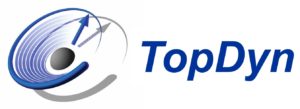

Seminar über die Physik der kondensierten Materie (SFB/TRR173 Spin+X und SFB/TR288 Kolloquium, TopDyn-Seminar)
Jan. 16, 2020 at
11:30 a.m.
in
MAINZ-Seminarraum, Staudinger Weg 9, 03-122
Univ-Prof. Dr. Jure Demsar
Univ.-Prof. Dr. Hans-Joachim Elmers
Univ.-Prof. Dr. Mathias Kläui
Univ.-Prof. Dr. Thomas Palberg
Current-induced orbital angular momentum and orbital torque for spin-orbitronics
Dr. Dongwook Go (Peter Grünberg Institut and Institute for Advanced Simulation, Forschungszentrum Jülich)
Electrical control of magnetism is a central theme in the field of spin-orbitronics. Current scheme relies on electrical generation of the spin current/density by utilizing the spin-orbit coupling (SOC) instead of using an extra ferromagnet (FM) as a spin polarizer. For example, in a bilayer structure consisting of a FM layer and a nonmagnet (NM) layer, spin current and density can be induced by the spin Hall effect in the NM and Rashba-Edelstein effect at the NM/FM interface, respectively. However, there has been a missing piece in spin-orbitronics so far: electrons carry angular momentum in the orbital wave function as well as in the spin. In this seminar, I demonstrate that the orbital degree of freedom exhibits rich dynamical phenomena, which is in contrast to a common expectation that the orbital is quenched in solids.
In the first part, I explain how to electrically generate the orbital angular momentum. Here, I introduce concepts of the orbital Rashba-Edelstein effect [1] and the orbital Hall effect [2], which are orbital analogs of the Rashba effect and the spin Hall effect, respectively. These are not only parental effects for their spin analogs, such that the spin phenomena follow the orbital phenomena by the SOC, but also present even in the absence of the SOC. In the second part, I focus on the consequence of the injection of the orbital angular momentum into the FM. As the spin injection gives rise to the spin torque (ST), the orbital injection results in torque on the magnetic moment, which we call orbital torque (OT) [3]. In the mechanism of the OT, it is not necessary to prepare the spin current or density beforehand as in the conventional mechanisms such as the spin Hall effect and Rashba-Edelstein effect. Since both OT and ST contribute to magnetic dynamics, it opens a route to enhancing the torque efficiency in spin-orbitronic devices. Interestingly, we notice that the sign of the torque efficiency in the NM/FM bilayer can be opposite to the sign of the spin Hall effect in the NM if the sign of the OT differs from that of the ST. As a prototypical example, I compare Fe/W(110) and Ni/W(110) bilayers from first principles calculation and discuss qualitatively distinct features of the OT for the experimental detection [4]. As the study on the orbital dynamics has started very recently, I briefly discuss future directions for consistent understanding of entangled dynamics of the spin and orbital degrees of freedom in solids.